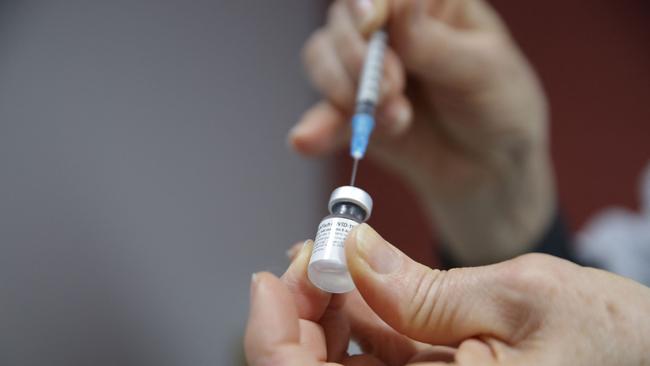No return to pre-pandemic living ‘in a reasonable time frame’: JPMorgan
Australia won’t return to 2019 type-living ‘in a reasonable time frame’, says JPMorgan, after modelling at odds with that in NSW.

Australia’s reopening will be slow and cautious and there will be no return to pre-pandemic living until better vaccines and treatments are developed, JPMorgan has warned.
In a sober reading of the Doherty Institute modelling and what it means for the nation’s path away from restrictions, the investment bank said a carefully phased easing of restrictions was most likely amid the prospect of further lockdowns if the test, trace, isolate and quarantine (TTIQ) strategy becomes “sub-optimal”.
It also predicted case numbers in NSW could end up being nearly double the expected peak announced by state Premier Gladys Berejiklian this week, with daily cases surging well into October.
The Doherty modelling, released to the public last month, forms the basis of the government’s reopening plan and states that once 70 per cent vaccine coverage levels are reached in the adult population, lockdowns are unlikely to be needed to keep control of cases and hospitalisations, assuming no new strains, and as long as the TTIQ system keeps working.
But spiralling case numbers in NSW and Victoria could quickly threaten to overwhelm the system.
“We think sub-optimal TTIQ is a reasonable expectation for NSW and possibly VIC,” the JPMorgan team, led by senior insurance analyst Siddharth Parameswaran, warned.
“The Doherty modelling shows that if we open up at 70 per cent with a sub-optimal TTIQ, we would still on average spend 22 per cent of the first 180 days in full lockdown to try to control growth, or we would spend 55 per cent with moderate lockdowns to constrain growth to manageable levels.”
NSW case numbers could surge through September and well into October, based on the bank’s own modelling, reaching a peak of 3700 cases a day by mid-October before declining, the analysts said. This assumes the current rate of vaccination continues and with a vaccine efficacy of 75 per cent.
JPMorgan’s prediction is at odds with the NSW government’s modelling, released this week, which projects a likely peak in infections, at up to 2000 per day in the LGAs of concern, will be reached in the next week or so.
NSW reported 1220 new cases on Tuesday, down slightly on Monday’s figures, with eight deaths recorded.
The state on Saturday reached the 40 per cent double-dose vaccination mark for people aged 16 and over and is looking at easing restrictions in mid-October.
“Case growth is very strong, suggesting a higher peak in cases,” JPMorgan said.
“We have increased our forecast significantly for new cases per day as there has been stronger exponential growth in cases than we previously forecast.”
Hitting 3700 cases a day in October would pressure the hospital system, the analysts warned.
“Current caseloads in NSW are increasing and will reach levels that will significantly pressure the hospital system, and caseloads could remain elevated if restrictions are eased off, even if vaccination levels continue to increase.”
The investment bank expects NSW to hit its 70 per cent target by October 7, followed by 80 per cent fully vaccinated by October 19.
Victoria’s limited success against delta despite its strategy of going hard and early was a warning to other states pursuing a zero-Covid strategy, they said.
“Zero Covid will eventually be very difficult to maintain given the infectiousness of delta.
“Still, it makes sense for states like WA and Queensland to open borders very carefully/slowly given the greater freedoms their populations currently enjoy.”
A phased management of different levels of restrictions is the most likely scenario once the country gets to its 70 per cent vaccinated target, according to the banking analysts.
Density rules would apply but retail and schools would reopen, and travel would be allowed. Around 70 per cent of symptomatic cases would be in children, “but deaths would not follow infections due to their much lower susceptibility,” the analysts noted.
But there won’t be any sudden return to normality, they predicted.
“It is unlikely we will see life return to 2019 type-living without social distancing in a reasonable time frame.
“This is perhaps even more likely to ring true for the medical settings which, going forward it seems, will have to shift a significant component of emergency resources for an extended period of time to deal with elevated caseloads of Covid.”



